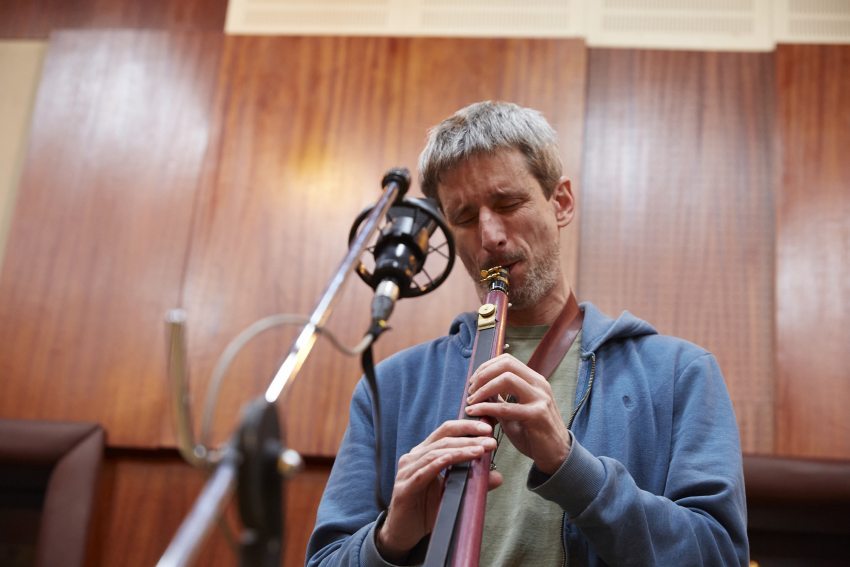Da Vinci dreamed of it, Dániel Váczi made it – a new Hungarian instrument set off to conquer the world
For years, saxophonist Dániel Váczi and designer Tóbiás Terebessy have been working on a family of wind instruments that is apt to transition between pitches without steps. The Sonus Foundation, with the support of the Hungarian Heritage Committee, has created a project entitled Tomorrow and Yesterday of the Tárogató, with the glissotar at its heart.

Sometimes jazzy, sometimes reflecting the sounds of the music of South and Central Asian peoples, are the melodies that Dániel Váczi's plays on the glissotar. The versatile musician has been playing the saxophone for three decades, and before that, he played the violin for many years. One day he began to think about how to make a wind instrument that could transition between pitches without steps (hence the name, which refers to the musical "glide", the glissando) and last year the Glissonic tárogató, also known as glissotar was born.
"The very first idea came to me while I was on the bus on my way home from Italy, and I was thinking about ideas for instruments on the way. This was in the early 2010s, and since January 2015 we have been working on the instrument with Tóbiás Terebessy, who is a very practical man. He's an industrial designer, he knows his way around wood, metal, and all kinds of materials, and he has a wide range of tools for processing. As we progressed with the process, we involved more and more instrument makers. From the tárogató side, master instrument maker József Tóth came in, Endre Pásztor helped as a flute and koboz maker, but several brass instrument makers were also involved in the process, such as master instrument maker Tibor Botlik. The octave shifter and the neck were installed by woodwind instrument maker Gábor Andréka, and violin maker Márton Faragó-Thököly glued the wood tube together from two halves” – explained Dániel Váczi.
The designer of the glissotar also revealed that the instrument is made from a tropical wood native to Central America, amaranth, also known as purpleheart, which turns purple when it matures. The material is then oiled to prevent it from absorbing water.
Dániel Váczi recalled that after the first working experiments, he started searching for similar instruments on the Internet and found a drawing by Leonardo Da Vinci, showing two flutes with one and the other with two longitudinal slits in the tube instead of holes. Under the picture, he wrote: "On these two flutes, the notes are not played in intervals, but in the way we form the human voice. (...) In this way 1/8 and 1/16 intervals can be created, or any other pitch." The inventor was interested in this solution despite the fact that at that time such a microtonal approach was not at all common. Leonardo had not worked out a way to close the gap perfectly (he said you could hold it with your fingers, but it wouldn't work), and on Glissonic instruments this was done with a stretched-out, flexible magnetic strap.
The glissotar is most commonly played in contemporary classical music, jazz and folk music, but it is also worth trying it in all improvisational genres.
"In improvisational music, you can exploit the interesting effects that can be created with this instrument, but there is also a lot of interest in contemporary music. We launched a competition for composers and, to our great surprise, seventy-five pieces were submitted from twenty-six countries. These are one or two-minute miniatures, eight of which I played in a concert, and twenty-four of which we recorded and you can listen to on YouTube, on the Sonus Foundation website," added Dániel Váczi.
The creators of the glissotar have recently qualified for the finals of the Guthman Musical Instrument Competition (a competition for the world's most creative instrument creators), which will be held in Atlanta.







